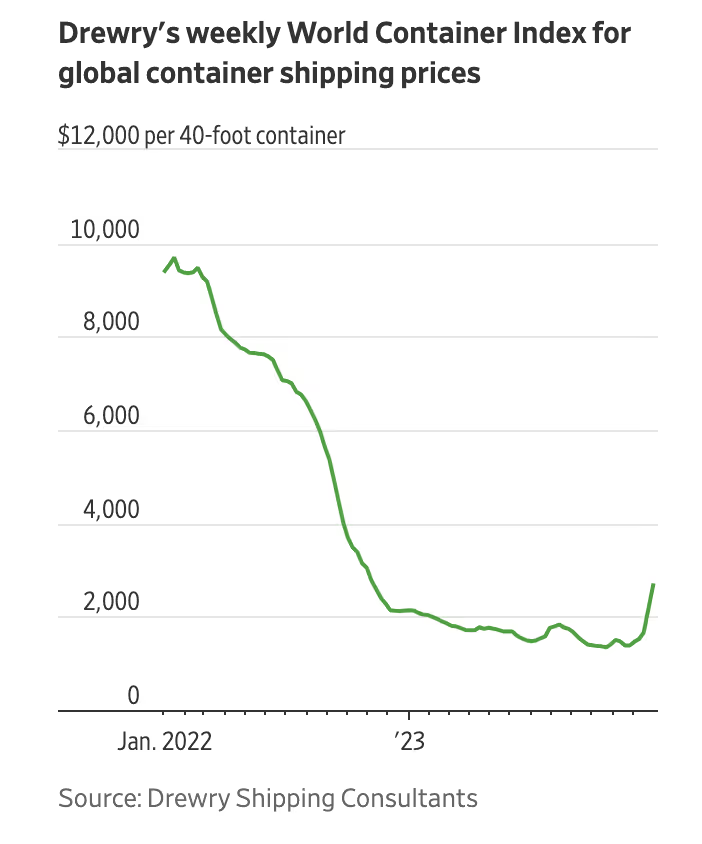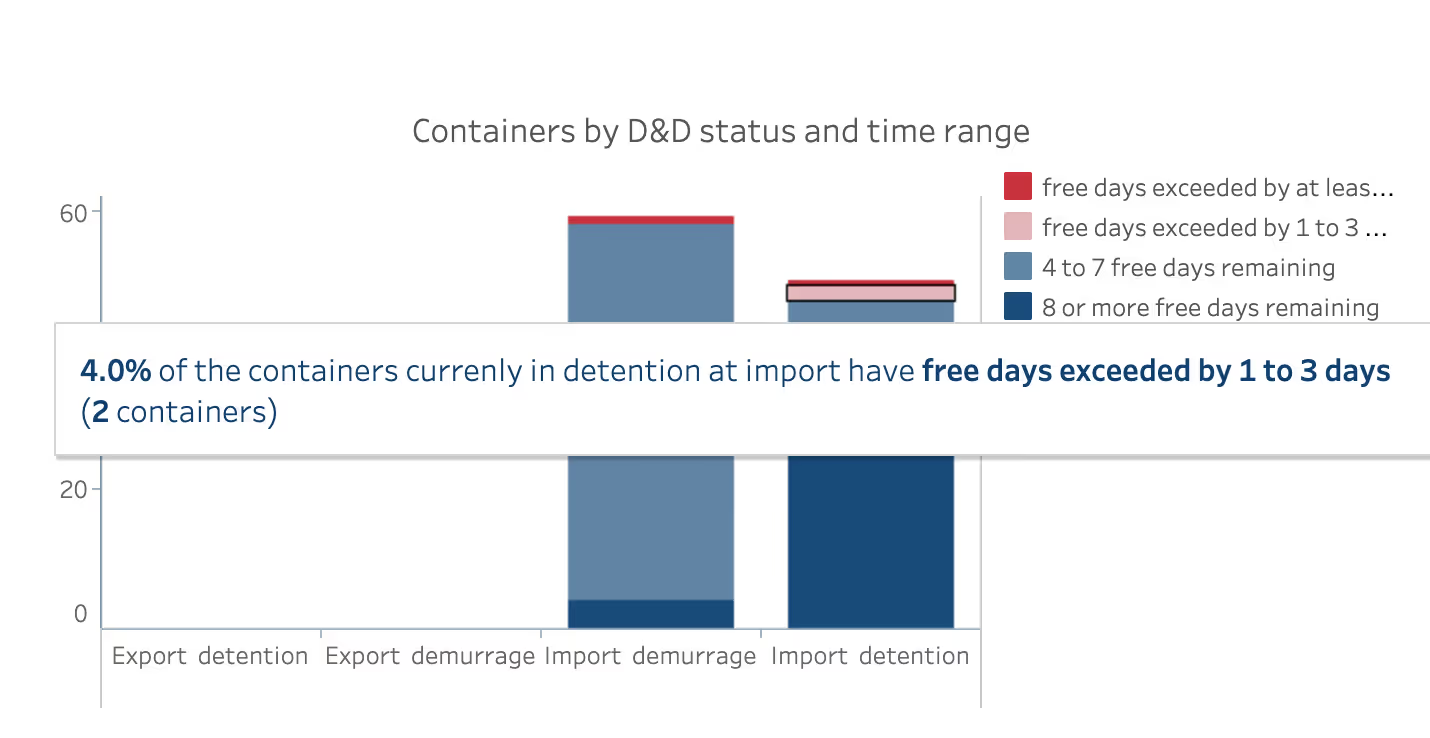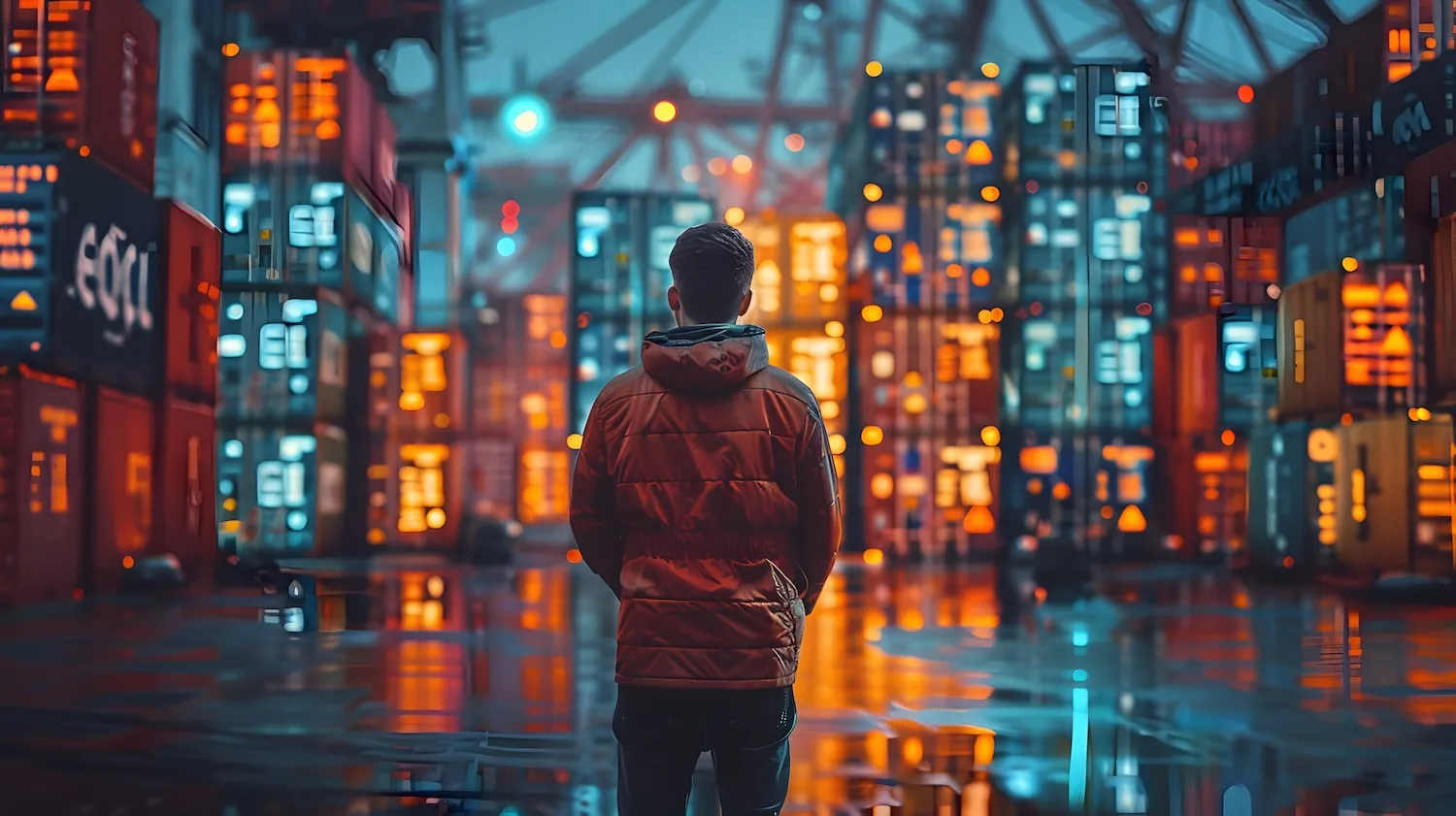Key Points
- Data-driven logistics proactively address Red Sea challenges
- Real-time data analytics enable early detection of disruptions and informed decision-making
- Predictive insights help optimize routes and minimize risks associated with geopolitical tensions
- Improved visibility strengthens supply chain resilience in volatile regions.
The situation at present
The economic sun had barely begun to peek through the pandemic clouds, but now Red Sea turmoil has left global trade hanging like a ship in rough seas. Eight weeks of attacks on Red Sea shipping, a vital hub for global commerce, has sent shipping costs soaring and sparked fears of renewed shortages and bottlenecks, just as economies grapple with high inflation and lingering disruptions.
January saw a staggering 80% of vessels rerouted around the Cape of Good Hope, sending container rates skyrocketing over 300%. Now, into its fourth week, the Red Sea chokehold persists, challenging the US-led military operation 'Prosperity Guardian' in securing safe passage. The ripple effect? A storm of shipping delays and skyrocketing costs, threatening to batter supply chains and economies deep into 2024.
Average costs to ship containers have almost tripled since the start of 2024
Just two weeks into January, and already shipping costs were on a rollercoaster ride, plunging businesses into uncharted territory. Rates on routes that typically depend on the Suez Canal doubled or even tripled. For instance, the spot price for moving containers between China and Rotterdam reached a record $3,577 in early January, a staggering 115% jump from just the previous week.
New shipping cost increases, although falling short of pandemic peaks, are again straining relations between importers and carriers. This follows a period of significant pandemic-era rate hikes driven by high demand and record carrier profits.

Vessel crossings have halved as vessel rerouting rises
Shipping giants including A.P. Moller-Maersk and Hapag-Lloyd, have confirmed the ongoing rerouting of their vessels away from the Red Sea. Industry executives project that the ten largest container ship operators have redirected approximately $200 billion worth of cargo away from the Red Sea since early December.
In the first week of January 2024, around 220 fewer vessels took this route compared to the previous year (-41%) and the figure is on a downward track, meaning the rerouting of vessels is still mounting. As many ultra-large vessels are among those being redirected, the impact on trade volumes is even bigger (-47%).
Brands Steering Clear of Red Sea Disruption by Rerouting Supply
Europe’s economy is already starting to feel the first wave from the Red Sea shipping disruptions. Such strains are forcing European companies to adjust their inventory management plans. Notably, automotive giants Volvo and Tesla have temporarily halted production at their European plants, grappling with supply disruptions resulting from recent attacks on freight vessels in the Red Sea.
Stellantis is also addressing supply interruptions by relying on air freight, compensating for rerouted vessels although claims minimal impact on manufacturing to date. Volkswagen Group on the other hand is avoiding production woes faced by Tesla and Volvo by redirecting ships quickly after the Red Sea crisis erupted last month, ensuring a steady supply of parts despite the escalating hostilities.
The UK's major grocery retailers, Tesco and M&S, are also grappling with the repercussions. Both companies have issued statements cautioning about potential price increases triggered by the Red Sea air strikes. Meanwhile, Sainsbury's is in close communication with the government to "mitigate the impact of the Red Sea situation."
The strategic role of supply chain technology becomes evident when navigating through crisis
While the path ahead remains unpredictable, astute supply chain leaders can emerge as architects of resilience. By leveraging powerful supply chain technology as their compass and rudder, they can help illuminate hidden disruptions, optimize alternative logistics pathways, and enable rapid course correction to reduce delays and meet customer demands.
In the midst of the Red Sea crisis, Shippeo's Ocean Visibility ETA solution offers a strategic advantage to customers by addressing delays in obtaining data from carriers.
The system provides real-time vessel positions, utilizing this information for accurate Estimated Time of Arrival (ETA) predictions. By leveraging sophisticated algorithms to make inferences based on vessel locations, Shippeo enables customers to proactively anticipate and navigate potential disruptions, providing them with a valuable head start in avoiding disruption whilst safeguarding their supply chains.
What Shippers can do to stay alert and plan accordingly during the Red Sea shipping disruption
With market uncertainty mounting, shippers can take immediate action to bolster their supply chains, minimize delays, and meet customer needs. Here are some tangible ways you can leverage real-time visibility of your ocean shipments to navigate the turbulent months ahead.
Anticipate and manage exceptions
Provide operations teams with accurate freight arrival and departure times, improving personnel productivity and exception management by reducing manual detective work by 20-50%.

Proactively communicate with customers
Leverage visibility to offer a proactive customer support model, helping to differentiate services, boost customer experience, and reduce churn risk by increasing Net Promoter Scores by 7 points on average.
.avif)
Inform planning processes with historical data
Utilize historical data to support comparison and decision-making when exploring and selecting various transportation modes (air, sea, rail, road) to optimize shipping routes and reduce transit times. For instance, air transport may be preferred for time-sensitive products such as raw materials which can reduce transit times and production line halts.
Reduce ocean freight costs
Minimize additional charges, such as demurrage fees, compliance violations, and expedited shipments with better management of overdue containers. Decrease detention and demurrage expenses by 10-25% and reduce expedited shipment fees by 25-30%.

.avif)
Optimize buffer stock, lead time management and inventory
Reduce buffer stock and lead times to save 10-30% by replacing inventory with information, benefiting working capital and cash flow while better meeting demand to improve customer loyalty.
Enhance operational efficiency and agility
Combined visibility data across transport modes helps users obtain an integrated, end-to-end view of shipments. This improves traceability, identification of problems, and handling of freight claims. It also helps reduce long waiting times and handovers at ports, enhances understanding of and responses to changes in ocean container schedules, mitigates production risks with earlier exception detection, and facilitates improved production and route planning.
.avif)
Accelerate invoicing and improve cash flow
Reliable and timely delivery notifications enable automated invoicing to improve cash flow and reduce invoicing delays and errors.
Keep an eye on carrier performance
Accurate, objective tracking data and insights enable organizations to better monitor their supply chain key performance indicators, aiding ocean carrier selection and contract negotiation.

Navigate Uncertainty with Clarity
In the upcoming months, shipping customers will most likely encounter heightened unpredictability in the supply chain, leading to uncertainty regarding their goods' arrival times. Shippers need to stay vigilant and strategically plan to navigate through this challenging period.
Curious about how ocean visibility data can help you anticipate disruptions? Schedule a demo of Shippeo's Ocean Visibility platform today.
Latest blogs & product releases.
Authors


.avif)




